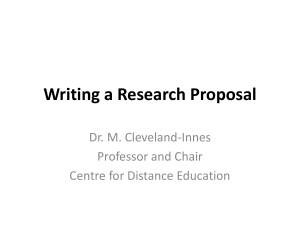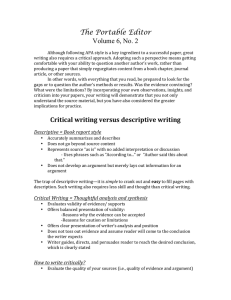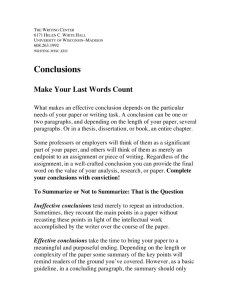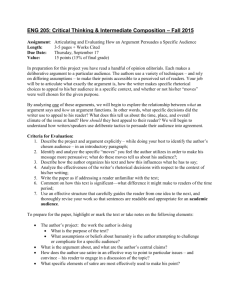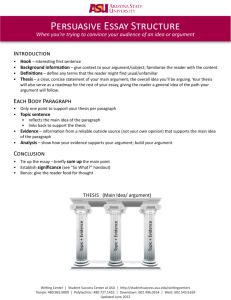naplan - Year9BBEnglish
advertisement
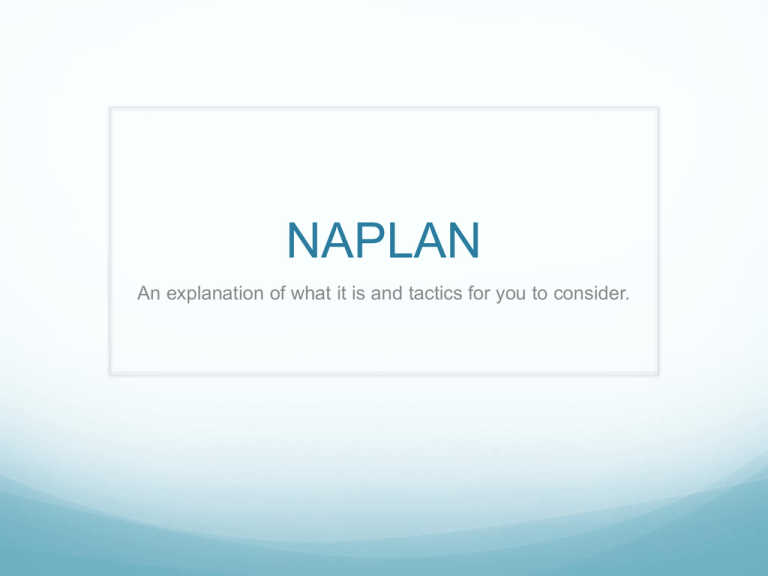
NAPLAN An explanation of what it is and tactics for you to consider. NAPLAN COMPONENTS Reading section Language Conventions Extended writing task The Reading Section Time allocated: 65 minutes Comprehension questions – a magazine booklet and an answer booklet The Language Conventions Section Time allocated: 45 minutes Aim is to assess your knowledge and application of grammar, punctuation, spelling and syntax Increases in difficulty as the questions go on The Writing Task Time allocated: 40 minutes – 5 mins to plan, 30 mins to write & 5 mins to edit Persuasive writing piece on a given topic Activity: Line Debate Class divided into two lines One side is the affirmative team & the other is the negative team Each team needs to present arguments either supporting/ negating the statement ‘It is cruel to keep animals in cages’ Plan your writing Intro: tell the audience whether you agree/disagree with the statement. List three arguments to support your contention. Body of paragraphs: Three paragraphs each with a different idea. Conclusion: summarise your ideas and restate your position as to whether you agree/disagree. Introduction The purpose of the introduction is to introduce the reader to the main idea of the essay. It should provide some context or identify issue(s) associated with the topic, and it should capture the interest of the reader and tell why the topic is important. An introduction contains a thesis statement which states the topic and the writer’s position on it and describes the line of argument to be taken in the writing. Development of Argument The body is used to convince the reader to agree with the position taken. It develops the point or points of argument that have been outlined or foreshadowed in the introduction. A case for each point of argument is developed with supporting evidence that may include explanation, examples, comparisons, contrasts, expert opinion or references, quotations, data and/or anecdotes. Some students will make the case for one side of the argument. Others will write in support of both sides with varying degrees of sophistication. In doing this, some may list points in support of both sides without coming to a position on the topic. Others may work their way towards a conclusion, discussing the pros and cons of the topic to arrive at a position. Conclusion The purpose of the conclusion is to bring closure to the argument in a way that reinforces the writer’s position on the topic. A conclusion may: − use a formulaic structure to summarise the thesis statement and/or points of the essay by either restating them exactly or by retelling them in different words − provide a final perspective or reflection on the topic that reinforces the thesis or writer’s position in a meaningful way. This may include:− − − − −a personal perspective or reflection an anecdote or quote a plan of action a call to action − draw conclusions by synthesising the ideas presented in the points of argument, thus arriving at a new perspective (not to be confused with introducing ‘new’ material). Let’s make a plan… Topic: Is it cruel to keep animals in cages? More information See the website: http://www.nap.edu.au/NAPLAN/The_tests/index.html


